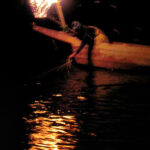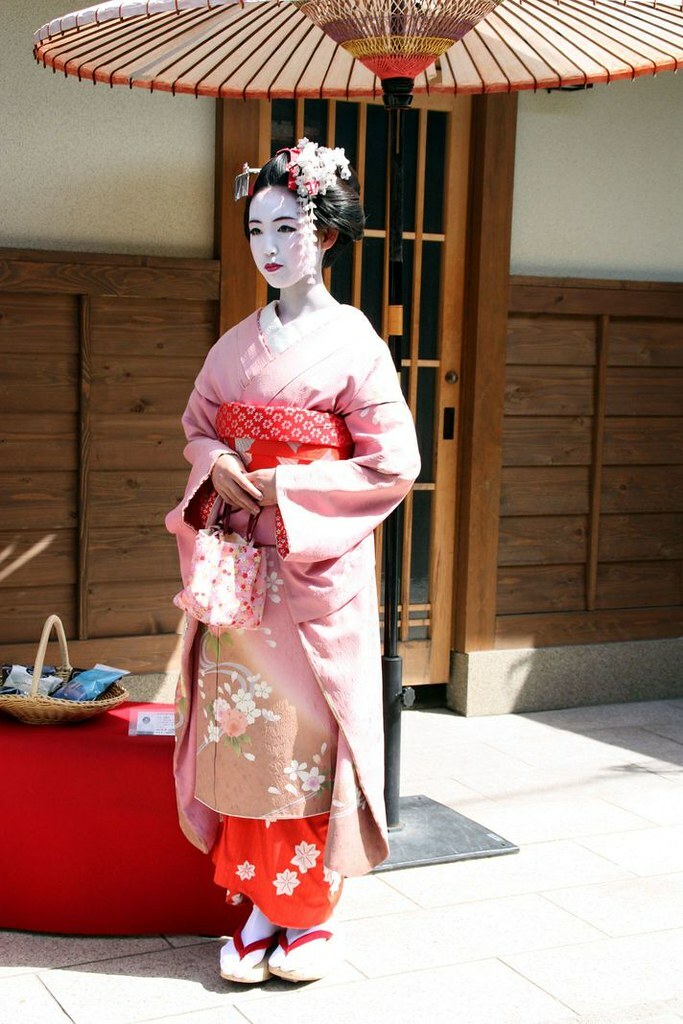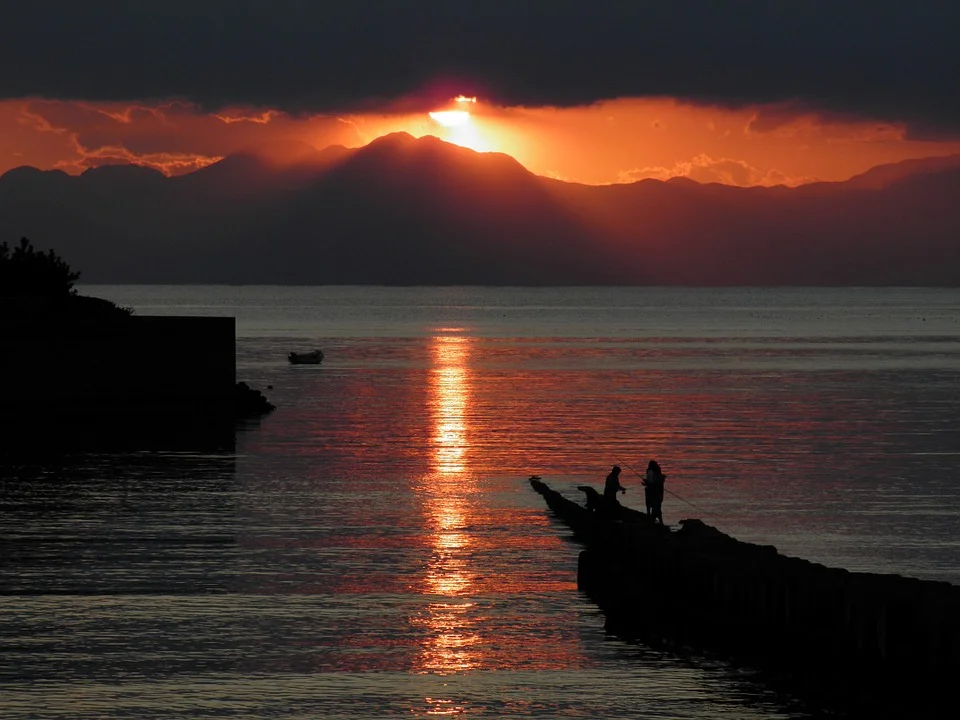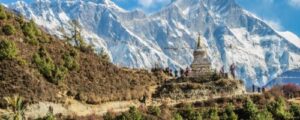© Good Travel Guide, November 2021 by Andreea Madalina Vornicu
Japan is very dense in cultural and natural heritage. Thousands of shrines and temples can be visited at any corner. What makes it a very special place are its crafts and ancient tradition, such as the old and accurate techniques of paper production. Anthropic landscapes concentrate in small areas, while natural ones cover the majority of the Archipelago. There are 34 National Parks and some of them will be featured in our guides to Japan (discover all of them on their official website). Another distinctive feature of Japan are its four seasons, which offer changing landscapes during the whole year. Enjoy foliage tours, walks in the snow, cherry blossoming and hot summer baths.
There are 15 certified destinations by Green Destinations (from both 2020 and 2021 Top 100 Competition) and many more to come. For this reason we have created different itineraries that cross all of Japan, which offer the best solutions in terms of distance between destinations.
Guide 1.
7 days to Honshu, Japan by train
Honshu Island is the biggest island of the Japanese archipelago. Therefore, it has many diverse landscapes, from mountains to rolling countrysides, lakes, rivers, and the sea. Cultural and intangible heritage is also very dense there.
This guide will lead you to 5 destinations that have been awarded for their excellent initiatives towards sustainable tourism development by Green Destinations. Beside being inspiring with their Good Practice Stories, these destinations have scored at least 60% compliance with the Green Destinations Core Criteria. They are located in Central and South Honshu, taking you from coast to coast and backcountry. Mostly based on a temperate climate zone, it is the perfect location for experiencing the annual four seasons.
Walk in the oldest historical sites of Japan, taste exquisite traditional food, and learn from locals their valuable crafts that have been passed on from generation to generation for hundreds of years.
Please note that this itinerary is a suggestion, but it is very flexible. Japan offers good railway systems that connect each major city to smaller towns and villages. You can therefore also easily extend or shorten this trip according to your wishes. Travelling by train in Japan is already an experience (discover the history of the Japanese railway at the Kyoto Railway Museum).
DOWNLOAD THE GUIDE HERE
Ready? Let’s go!
Day 1-2: Kyoto City, Kyoto Prefecture
How to get there?
- Express train (Shinkansen) from Kansai International Airport to Kyoto Station
- Duration: 1h 20’
- Approximative cost: 2,850 ¥ / ± 21.5 €
Note: The Shinkansen train, a.k.a. the bullet train, is the high-speed Japanese railway which is very popular for connecting distant regions. From its wide windows it is possible to admire diverse landscapes, while having a comfortable journey. Not to mention each seat can reduce 92% of carbon emissions.
Kyoto, the ancient capital of Japan, is located in a basin surrounded by mountains on three sides. Through its long history of more than 1,200 years, Kyoto has blended diverse cultures and has been the spiritual home of Japanese people. It is known as a home to more than 2,000 shrines and temples, featuring 14 UNESCO world Heritage Sites.
Kyoto has a rich natural, cultural and intangible heritage, where new and old combine. The Kyoto station is both a gateway and a tourist site due to its futuristic architecture. The grid layout of the city center’s streets will bring you to many attractions, like the modern Kyoto Tower or one of the most important Shingon Temple, the Toji Temple with the tallest pagoda in Japan.

On your second day to Kyoto, you can enjoy some hidden gems close to the city with fewer tourists around. Fushimi, renowned for its 1000 torii gates from the XVII century or its 20 sake breweries that offer tastings for visitors over-20. Ohara, which means “big field”, has a rolling slow-paced countryside and Sanzen-in Temple’s unique mossy emerald ground in summer, which turns red due to maple leaves falling in autumn. Yamashina, is home to national treasures like Diagogi Temple with its oldest wooden five-storied Pagoda and old traditional Kiyomizu pottery displayed at the Rakuchu-Rakagai Gallery.
Day 3: Nanao City, Ishikawa Prefecture
How to get there?
- Express train from Kyoto Station to Kanagawa, then change and get a local train to Wakuraonsen.
- Duration: 3h 15’
- Approximative cost: 8,590 ¥ / ± 65 €
Nanao City is located in the Noto peninsula which is charming for its abundant nature and its seasonal changing sceneries.
Nanao City is famous for its wellness activities, like Wakura Onsen Soyu, a public bath that operates since 1641. Immerse yourself in Japanese tradition and relax in natural hot spring water. On Nanao Bay, you can also taste some of the most delicious sushi in Japan. Notably, some local businesses have adopted innovative solutions to fight food waste in gastronomy, like food residue composting and fewer courses. Due to this, fresh and seasonal fish and vegetables from the sea and mountains are always available.

Photo by bobthemagicdragon.
Day 4: Shirakawa Village, Gifu Prefecture
How to get there?
- Direct train from Wakuraonsen (Nanao City) to Kanazawa station, then take an express bus to Shirakawa-go*.
- Duration: 2h 25’
- Approximative cost: 4,800 ¥ / ± 36 €
Note: This time we are encouraging you to take a bus, since there is no train connection to this destination. Besides being less polluting than private car travelling, bus rides are cheaper and more comfortable too.
In Shirakawa-go Gassho-zukuri Houses Village, a World Heritage Site, live 1,600 people that dedicate themselves to farming and landscape protection. Since ancient times residents have helped each other to make life easier in the mountainous area at the foot of Mount Hakusan.
As a symbol of mutual work (called “Yui”), there are 114 Gassho-zukuri wooden houses with a thatched roof and 59 of them are still inhabited. Some are open for visitors. You can also taste some locally produced rice.
On the other side, from the village, it is easy to access the Hakusan National Park Forest Ohjirakawa, home of centuries-old hardwood trees, like Mongolian oak. Here you can visit natural lakes and waterfalls, such as Shiramizu Falls.
*There are only 2 routes available: at 8.10 or 11.10 in the morning. Reservation is required (reserve your ticket from here).

Day 5: Nagara River, Gifu Prefecture (2 options)
How to get there?
- Express bus to Takayama, then a LTD. Exp. (Wide view) train to Mino-Ota station and a local train to Minoshi station (same rides to Option 2. Gifu City).
- Duration: 3h (or 3h 50’ to 2nd option)
- Approximative cost: 5,140 ¥ / ± 39 € (or 5,240 ¥ / ± 39.50 € to 2nd option)
The Nagara River has a 166 km long mainstream originating in Mt. Dainichigatake in Gujo City, Gifu Prefecture. It is considered one of Japan’s three clearest rivers and supports local economic development connecting forests, villages and the sea.
Option 1. Mino City
Discover the “Hon-mino-shi” paper which is a UNESCO Intangible Cultural Heritage (at the Mino Washi Museum) and “Wagasa” traditional parasol crafting that has continued in Gifu since around the Edo period (1603-1867). The latter has incredibly complex structures with more than 100 steps in its production process.
Also visit the Udatsu Wall Historical District famous for its wealthy eaves decoration and “Udatsu” fire walls.

Option 2. Gifu City
Here you can enjoy the Gifu’s Hanamachi culture. It combines cormorant fishing (from May 11 to October 15), a traditional fishing method of ayu sweetfish, and Gifu maiko (apprentice Geisha) night dances that you can admire from viewing boats or dedicated trails with riverside “sajiki-seki” seating. Visit the Nagaragawa Ukai Museum for representations of cormorant fishing or walk through the Kawara-machi Historic Street to glance at the typical architecture.
Fun fact: only two craftsmen can make the special cormorant fishing boats in the whole prefecture. For this reason, hands-on courses for both visitors and children were introduced at the “Ukai Museum” in 2012 and in the Nagara River Ayu Park in 2018. Now ayu of the Nagara River System is designated as a Globally Important Agricultural Heritage System by FAO.


Photo by birdfarm (left). Photo by Annie Guilloret (right).
Day 6-7: Miura Peninsula, Kanagawa Prefecture
Miura Peninsula is known for its ancient Japanese capital, Kamakura, as well as for its atmospheric architecture and ancient culture. Surrounded by the sea on three sides, the Miura Peninsula is valuable for its fishing industry and mild-climate agriculture. Moreover, warmer temperatures will welcome you there.
Stop 1. Zushi City
How to get there?
- Direct train from Gifu to Nagoya, then change to Shin-Yokohama, change to Yokohama and as last change to Zushi-Hamaya
- Duration: 2h 50’
- Approximative cost: 6,700 ¥ / ± 51 €
In Zushi you can visit historical sites and go hiking around Jimmuji Temple, which is a sacred place of Takatoriyama mountain worship built in the Nara period (AD 710-794). Similarly, you can enjoy daily walks around Ikego Forest, where wild birds and flora live in harmony.
If you prefer to slow down and enjoy the breeze you can go to one of Zushi’s beaches. On sunsets, you can glimpse at a Shinto shrine that stands above the sea on a tiny rocky island of Morito Coast. Or, you can always change your mind and try some water sports, like surfing and sailing.

Stop 2. Yokosuka City
How to get there?
- Direct train from Zushi Hayama to Kanazawa-Hakkeistation, then change to Yokosuka-Chuo.
- Duration: 25’
- Approximative cost: 250 ¥ / ± 2 €
Yokosuka City displays a more modern side of Japan. It is a port basin where many sailors from around the world arrived at the Archipelago. That inspired James Clavel to write his novel “Shogun”. Today, you can visit the Memorial 19th-Century Warship at Mikasa Park. Nearby 15-min ferry rides will bring you to Sarushima Island, a former Japanese military fortress where you can visit its ruins and tunnels or explore its Nothern rocky shoreline
You can also have a walk around Dubuita Street, a shopping area where the famous Sukajan jacket was first designed. It is said that this street brings some American flavour to the city. Its name comes indeed from the thick iron plates provided by the pre-war Navy arsenal, which were laid on the Dobu River.

Photo by Mototaka Tsujima.
Way back home
If you are an international traveller you can reach Tokyo Haneda International Airport within 1h distance by train from the last destination. As an alternative international airport, there is the Tokyo Narita International Aiport within 2h express train ride or 6h by local trains. Another option is to go back to Kansai International Aiport within a 9h 30′ distance by train.
Before you go
Japan has a lot to offer. Happily, there are many other “Good Practice” destinations to share on our next guides. Thank you for reading this guide! We hope that your desire to travel to Japan in a responsible way has risen inside you.




